
Beatmatching or pitch cue is a disc jockey technique of pitch shifting or time stretching an upcoming track to match its tempo to that of the currently playing track, and to adjust them such that the beats are synchronized—e.g. the kicks and snares in two house records hit at the same time when both records are played simultaneously. Beatmatching is a component of beatmixing which employs beatmatching combined with equalization, attention to phrasing and track selection in an attempt to make a single mix that flows together and has a good structure.

A disc jockey, more commonly abbreviated as DJ, is a person who plays recorded music for an audience. Types of DJs include radio DJs, club DJs, mobile DJs, and turntablists. Originally, the "disc" in "disc jockey" referred to shellac and later vinyl records, but nowadays DJ is used as an all-encompassing term to also describe persons who mix music from other recording media such as cassettes, CDs or digital audio files on a CDJ, controller, or even a laptop. DJs may adopt the title "DJ" in front of their real names, adopted pseudonyms, or stage names.
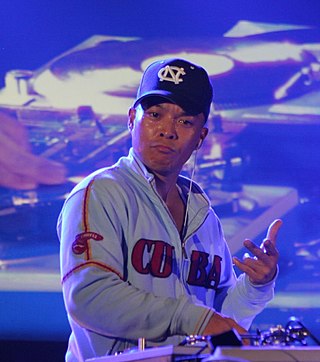
Turntablism is the art of manipulating sounds and creating new music, sound effects, mixes and other creative sounds and beats, typically by using two or more turntables and a cross fader-equipped DJ mixer. The mixer is plugged into a PA system and/or broadcasting equipment so that a wider audience can hear the turntablist's music. Turntablists typically manipulate records on a turntable by moving the record with their hand to cue the stylus to exact points on a record, and by touching or moving the platter or record to stop, slow down, speed up or, spin the record backwards, or moving the turntable platter back and forth, all while using a DJ mixer's crossfader control and the mixer's gain and equalization controls to adjust the sound and level of each turntable. Turntablists typically use two or more turntables and headphones to cue up desired start points on different records.
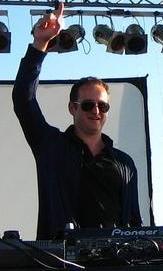
Alexander Paul Coe, known professionally as Sasha, is a Welsh DJ and record producer. He is best known for his live events and electronic music as a solo artist, as well as his collaborations with British DJ John Digweed as Sasha & John Digweed. He was voted as World No. 1 DJ in 2000 in a poll conducted by DJ Magazine. He is a four-time International Dance Music Awards winner, four-time DJ Awards winner and Grammy Award nominee.
Valerie Olukemi A "Kemi" Olusanya, commonly known by her stage name Kemistry, was a leading English drum and bass DJ of the early 1990s, half of duo Kemistry & Storm, and co-founder of the Metalheadz record label.
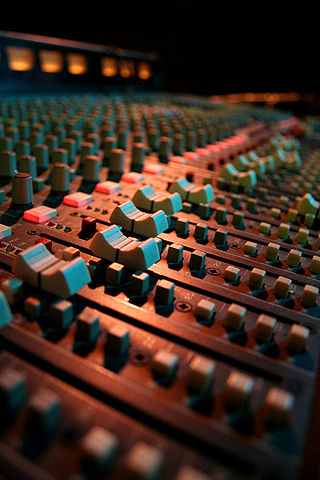
In audio engineering, a fade is a gradual increase or decrease in the level of an audio signal. The term can also be used for film cinematography or theatre lighting in much the same way.
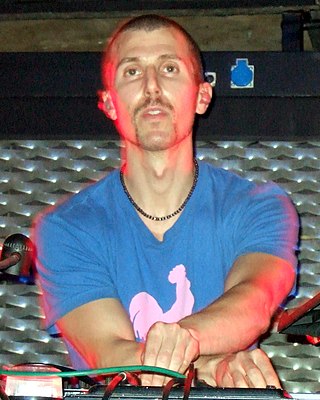
Joshua Winkelman, better known by his stage name Josh Wink, is an American electronic dance music DJ, label owner, producer, and remixer. He is a native of Philadelphia, United States. A pioneering DJ in the American rave scene during the early 1990s, Wink was the most prominent exponent of the tribal forms of techno and house in the U.S. In 1995, he released several hits, including "Don't Laugh", "I'm Ready", and "Higher State of Consciousness," which topped the dance charts in Europe. He has had many club hits such as "How's Your Evening So Far?" and "Superfreak (Freak)" and has also gained much attention for his remixes of Stabbing Westward, FC Kahuna, Paul Oakenfold, Moby, Towa Tei, Ladytron and Depeche Mode, among others.

The CIE 1931 color spaces are the first defined quantitative links between distributions of wavelengths in the electromagnetic visible spectrum, and physiologically perceived colors in human color vision. The mathematical relationships that define these color spaces are essential tools for color management, important when dealing with color inks, illuminated displays, and recording devices such as digital cameras. The system was designed in 1931 by the "Commission Internationale de l'éclairage", known in English as the International Commission on Illumination.

A DJ mixer is a type of audio mixing console used by disc jockeys (DJs) to control and manipulate multiple audio signals. Some DJs use the mixer to make seamless transitions from one song to another when they are playing records at a dance club. Hip hop DJs and turntablists use the DJ mixer to play record players like a musical instrument and create new sounds. DJs in the disco, house music, electronic dance music and other dance-oriented genres use the mixer to make smooth transitions between different sound recordings as they are playing. The sources are typically record turntables, compact cassettes, CDJs, or DJ software on a laptop. DJ mixers allow the DJ to use headphones to preview the next song before playing it to the audience. Most low- to mid-priced DJ mixers can only accommodate two turntables or CD players, but some mixers can accommodate up to four turntables or CD players. DJs and turntablists in hip hop music and nu metal use DJ mixers to create beats, loops and so-called scratching sound effects.
Baltimore club, also called B'more club, B'more house or simply B'more, is a music genre that fuses of breakbeat and house. It was created in Baltimore, Maryland in the early to late 1990s by 2 Live Crew's Luther Campbell, Frank Ski, and DJ K-Swift, among others.
Code-mixing is the mixing of two or more languages or language varieties in speech.
A segue is a transition from one topic or section to the next. The term is derived from Italian segue, which literally means "follows".

Phillip Krokidis, known professionally as Phil K, was an Australian electronic music DJ and record producer from Melbourne. He was a member of the "Aussie breaks" music scene which also includes other Melbourne DJs such as Nubreed and Andy Page. In addition to DJing, Phil K also produced alongside Habersham and Dave Preston in The Operators and was also a member of Hi-Fi Bugs and Lostep. He was known primarily for his DJing of breakbeat music, but often weaved in other genres such as ambient, deep house, and techno and did not pigeonhole himself with a particular genre.

Nathaniel Pierre Jones, better known by his stage name DJ Pierre, is an American DJ and performer of house music based in Chicago. Jones' first single, "Generate Power", became standard fare for scores of producers during the next few years. Philippe Renaud, a journalist for La Presse in Montreal, states that the term acid house was coined in Chicago in 1987 to describe the sound of the Roland 303 bass machine, which made its first significant recording appearance on Phuture's Acid Trax in that year.
A DJ mix or DJ mixset is a sequence of musical tracks typically mixed together to appear as one continuous track. DJ mixes are usually performed using a DJ mixer and multiple sounds sources, such as turntables, CD players, digital audio players or computer sound cards, sometimes with the addition of samplers and effects units, although it is possible to create one using sound editing software.

The studio practices of the Beatles evolved during the 1960s and, in some cases, influenced the way popular music was recorded. Some of the effects they employed were sampling, artificial double tracking (ADT) and the elaborate use of multitrack recording machines. They also used classical instruments on their recordings and guitar feedback. The group's attitude towards the recording process was summed up by Paul McCartney: "We would say, 'Try it. Just try it for us. If it sounds crappy, OK, we'll lose it. But it might just sound good.' We were always pushing ahead: Louder, further, longer, more, different."
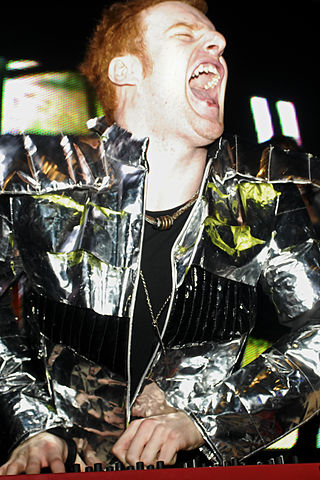
Jon Ford, better known by his stage name Joyryde, is an English DJ and producer, son of John Ford.
beaTunes is a commercial software package for Microsoft Windows and Mac OS X, developed and distributed by tagtraum industries incorporated. It originally started as a tool for detecting the BPM in music managed by Apple's iTunes. Since version 3, beaTunes is not dependent on iTunes anymore and supports Harmonic mixing and Beatmixing through BPM and key detection. Keys are displayed in either their musical notation or in Open Key Notation.

Joseph Robert Saddler, popularly known by his stage name Grandmaster Flash, is a Barbadian DJ and producer. He created a DJ technique called the Quick Mix Theory. This technique serviced the break-dancer and the rapper by elongating the drum breaks through the use of duplicate copies of vinyl. This technique gave birth to cutting and scratching. It also gave rappers better music with a seamless elongated bed of beats to speak on. He also invented the slipmat.
George Kordas, better known by the stage name DJ Bonez, is a hip hop DJ and producer, originally from Sydney and currently based in Melbourne, Australia.












